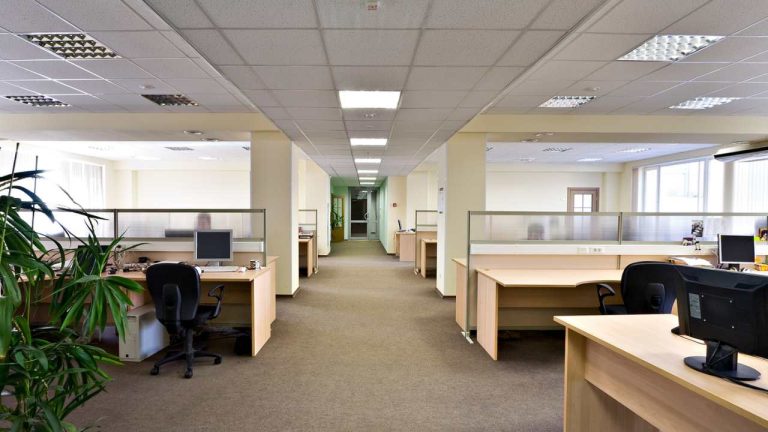Important Issues to Consider in Industrial Real Estate Leasing
In leasing an industrial property, take the time to fully understand the attributes of the asset and the rental and leasing requirements of the landlord. There are sometimes unique circumstances and special occupancy issues to consider and merge into the leasing process. The tenants that you talk to will have plenty of questions and you need to have the best answers for the situation.
The ‘Ground Zero’ of Investment Properties
The industrial segment of the property market is ‘ground zero’ when it comes to business and commerce. It is where most of the small business activity and manufacturing occurs. It is the first segment of the property market to respond when things are improving in the economy, and the first to struggle when things are tough.
If you are working as a broker on industrial property it is best to watch the economic indicators and watch how your tenants and businesses are responding in your city. You can set your prospecting targets around the current levels of business locally and the patterns of business sentiment.
What Factors are Important in Industrial Property?
All of the issues below should be considered and questioned prior to taking any industrial property to the market for leasing. All of these factors will have an impact on tenant selection, business operations, and future occupancy.
- Location of premises – Review the property location, the local streets, and the surrounding properties. Look for issues that could evolve from the location and have an impact on the area. Some adjoining businesses may present certain challenges when it comes to tenant selection and placement in your property. The most common challenge you will strike when leasing industrial property today is that of car parking. Customers and staff car parking should be considered for the business in question.
- Boundaries – If the property has been surveyed, get a copy of the boundary plan and look at the boundary fences to ensure that there are no encroachments or breaches of fence security. The fence lines should also be checked prior to the lease negotiation commencing.
- Car parking – What are the rules that apply to car parking in the street outside the property, around in the buildings themselves, and will that have an impact on property use or any lease negotiation? What are the car parking opportunities within the property and can you achieve a rental for that car parking? Consider the pressures that could apply to car parking when it comes to staff and customer needs now and into the future. How will vehicles move to the property at different times of the day given passing traffic and local roads? Are there any signage issues to consider and security changes required around the car parking area?
- Security – Every industrial property will have some security factors to consider and consolidate into the leasing process. Parameter and building security should be provided by the landlord as part of property design and layout. Within the property the tenant may wish to install advanced security processes, swipe card systems, controls and or guards, cameras, and special surveillance processes. Any special issues of security should be merged into the lease document and suitably described. At the end of lease occupancy, those security items should be removed at tenant cost.
- Signage – Most businesses today leasing industrial property will require a reasonable level of exposure and signage. See if pylon signs can be installed on the property boundary. That may be a rental possibility or additional income stream for the landlord.
- Vehicle access – Some businesses require trucks, cars, and deliveries to occur within the same property. Some of those deliveries are large and frequent and will happen at all times of the day. How can trucks move around inside the boundary fences to effectively make those deliveries? What would be the turnaround time for a fully laden truck to unload? Some properties are better than others when it comes to goods logistics.
- Improvements – The design of the property will have factors of function and attraction to any new industrial business. Look for the strengths in property design and how the work spaces can bring economies of industrial operation. Understand how the office area placement and size can work with the warehouse and any showroom zones.
- Services and amenities – The services and amenities will have some impact on property choice for some tenants. They may require 3 phase power, gas, and high volume water supplies.
- Asking rental and lease requirements – Determine the rents and lease requirements for the property in its location. The landlord’s investment strategies will also have something to do with those factors.
- Types of outgoings to be recovered – The liability for outgoings payments and types of outgoings will be driven from the lease document. Your job is to know what the industry standards are for outgoings recoveries in the general location.
- Rent review timings and requirements – Set rent review standards in any lease negotiation that help the landlord achieve reasonable rental growth in keeping with market rent growth. You can mix and match the rent review alternatives with percentage increases, fixed increases, and market increases.
- Permitted use – The property will suit certain industrial uses and business activity. That use should be ‘permitted’ and then documented in the lease so that the tenant use is controlled on the property.
- Option conditions and notice period – If you are going to give a tenant an option for a further period of occupancy, make sure that the time frame to nominate and exercise that option is reasonably early; the landlord can then look for another tenant if a lease option is not being exercised.
- Tenant covenants – Some clauses will need to be set in the lease as requirements of the tenant to fulfil. A good example would be renovation or redecoration during the lease term; any long lease should have that requirement imposed on the tenant. Another example would be the insurance cover exercised by the tenant during occupancy.
- Landlord covenants – Certain works and maintenance will be required of the landlord as part of the lease and during its term. What are they and how should they be noted in the lease? If the property is ‘aging’ then the maintenance requirements will be complex and growing. The lease should set out how maintenance events are responded to, who has the liability, and what happens if something major happens in the property that could impact property use into the future.
- Assignment and Subletting requirements – Will the landlord be comfortable in allowing an assignment or sublet to occur with the lease and during its term? Make sure that the requirements of both processes are described for the tenant to understand and agree to.
- Risk factors and Insurance – Every industrial business brings with it some degree of risk. Insurance can help with managing the risk, but the lease document will need to also clearly set out the rights and obligations of both parties if something happens of a risk or injury nature in the property.






